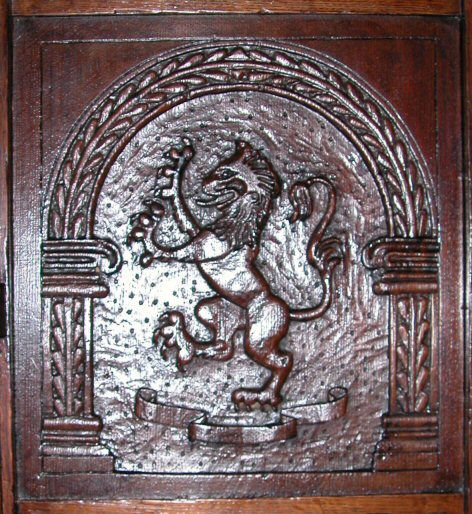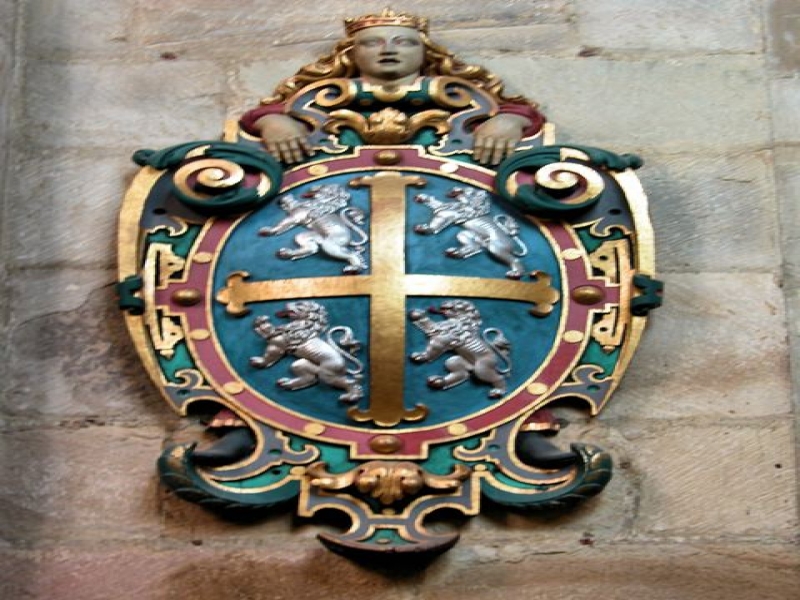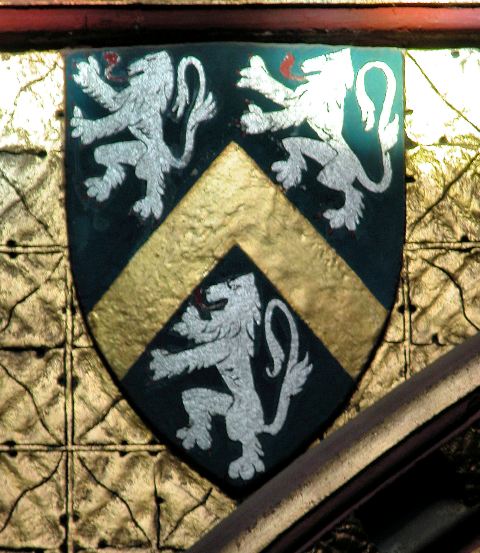The President's Chair
Restoration of the President's Chair
On February 20th, 1936, a new chair for the use of the President was presented to the Club by member H. L. Gradon, a well known local builder and President of the Club at that time. Seventy years later, the chair was beginning to look just a little bit tired. In fact, Michael Hill, during his year of office, was seen to tackle the edge of the seat with some sandpaper to minimise the damage it was doing to his trousers!
So, we resolved to have it properly refurbished and Alan Ribchester (as ever) knew just the man to do it. At our regular meeting on January 17th, 2008, the chair was returned to the Club by its expert restorer, Philip Denaro.
The Chair is unveiled by President David and Philip Denaro.
After lunch, Philip gave us a summary of the history of the Chair and the work he did to restore it.
He told us that it is a traditional "hall chair", originally made somewhere between 1900 and 1920 and had been adapted to incorporate the Rotary details. It is made of oak and is typical of the period in that it incorporates several styles - Tudor, classical Greek and Romanesque. It is also made to the "correct" proportions for such a chair, with a seat height of 17 inches, seat depth of 18 inches and arm height above the seat of just over 11 inches. But the real surprise was that the back panel is 17th century - some architectural salvage, perhaps?
In order to ensure that it would see out at least another seventy years, Philip completely "deconstructed" the chair by removing 60 pegs or dowels in order to check every joint. He also repaired a crack in one of the arms and one across the seat - it is now not possible to see where these were.
After reconstructing the chair, with pegged joints as in the original, Philip applied no less than 25 coats of polish of five different colours, carefully matched to the different shades of oak.
Another view of the chair, showing the carving on the seat.
A close-up of the Rotary adaptations on the chair back, showing the Rotary Wheel and the Durham City arms.
At each side of the back there are small brass plaques naming the Club Presidents from its formation in 1923. Unfortunately there is only room for 38 of these, taking us up to the 1960-61 Rotary Year. Some of these plaques had been lost over the years, so Philip located a suitable engraver in Newcastle who was able to make appropriate replacements; by one of those surprising coincidences, this was the same person who had engraved the originals!
A final twist in the tale came from member Arthur Moyes who, among many other talents, is the Archivist at Hatfield College. Looking closely at the carving on the back panel, he reckoned that it could be the "Hatfield Lion". Perhaps the "architectural salvage" is from the coaching inn that stood on the site of Hatfield College? Arthur will, no doubt, investigate. Given the close connections between the College and the Club in its early days, it is a distinct possibility.

The 17th century back panel, showing what could be the "Hatfield Lion".
Philip was given a resounding round of applause for his description of the chair and the work he had done. He has refused payment for the work, but he has nominated a charity to whom we will make a generous donation.
Footnote - 28/02/2008
As we would expect, Arthur Moyes continues to explore the Hatfield connections. This is not easy, since the "lion rampant" seems to be such a common heraldic beast. In the meantime, I have taken some photos of the details on Bishop Hatfield's Tomb in Durham Cathedral (with the kind permission of the Dean & Chapter). Two are shown below and I leave it to you to judge the similarity ( or otherwise) with the Lion on the President's Chair.


Eric Colling
Related pages...
From the Peart Archives
more Some interesting photos supplied by Rtn Brian Peart
From the Archives - the Lectern
more ...
From the Archives - Membership & Communications
From the Archives - Some Speakers and their Topics
The Shelter Saga
more ...
Diamond Jubilee Dinner
more A memorable occasion ...

The Jubilee Plaques
more The Jubilee Plaques
back to page above this...

Club History
back We entered the club's centenary year with a display in the Clayport Library